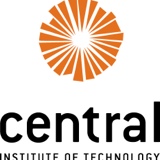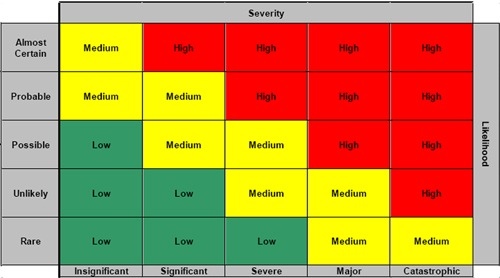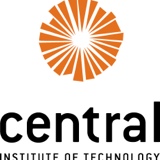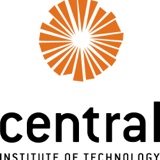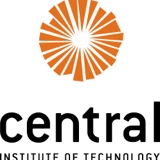Information
-
Audit Title
-
Area/Block
-
Conducted on
-
Prepared by
-
Location
-
Personnel involved in the inspection
-
Risk Matrix
1. Layout
-
Area is clean, tidy and well kept
-
There is adequate ventilation
-
Floor is free of obstructions and slip resistant
2. Environment
-
Lighting is adequate.
-
Temperature is comfortable.
-
Area is free from odors.
3. Emergency procedures
-
Written evacuation procedures, exits displayed and up to date.
-
Portable fire extinguishers have been provided and maintained.
-
Escape routes and emergency doors are clear.
-
Procedures are in place for isolated workers.
-
Emergency and hazard signage is clearly visible.
4.first aid facilities
-
There are appropriate first aid and emergency facilities in the near vicinity and workers are aware of them.
-
Kits are clearly signed, stocked and contents are in-date.
-
Names and contacts of the first aiders displayed and up to date.
5. General facilities
-
Washing facilities are clean and functional.
-
Are stairs, passageways and store rooms well lit?
-
Warning and safety signage in good condition.
-
Walls, windows, doors and furniture is in good condition.
6. Manual handling
-
Where application manual handling Standard Operating Procedures (SOP) are available.
-
Personnel in inspection area are inducted and trained in manual handling.
-
Trolleys or mechanical hoists are available and are being considered for heavy items or loads.
-
Step ladders or safe steps are available to access light items stored on high shelves.
-
Workers have been asked for safer ways to do the job.
7. Storage
-
Adequate storage area provided
-
Materials stored in racks and bins wherever possible.
-
Storage designed to minimize lifting problems I.e. heavy objects not stored on upper racks.
-
Racking securely fixed to floor or wall.
-
Safe lifting sign displayed.
-
Are storage areas labelled appropriately and organized.
8. Slips and trips
-
Personnel in inspection area are inducted and trained in slips and trips.
-
Mobile warning signs are available and erected near spills.
-
There are special provisions for slip resistance in wet area.
-
Guard rails and slip resistance are provided onc ramps and stairs.
-
Walkways are free of hazards, such as electrical leads.
9. Electrical safety
-
Personnel in inspection area are inducted and trained in Electrical Safety and are following applicable SOP's. (Safe Operating Procedures).
-
All portable equipment has current test tags.
-
Portable RCD device is available and has been tested.
-
Flexible cord, plugs and extension leads are in good condition and have either moulded or transparent type plugs.
-
Power points are suitable for the location and are positioned safely.
-
Power boards used. (not double adapters).
-
Faulty equipment is tagged out. (tags out tags is available).
10. Chemical aspects
-
Personnel in inspection area are inducted and trained in Chemical Handling and are following applicable SOPs. (Safe Operating Procedures).
-
MSDS (not older than 5 years) are available for workers' reference and included in the hazardous substances register.
-
There is an up to date easy to find and read list/registrar summary of all chemicals used.
-
A risk assessment has been completed for all chemicals and harmful substances stored and used at the workplace.
-
Actions have been taken to control risks. For example, an investigation has been done to find out whether an alternative safer chemical is available.
-
Decanted containers are labelled with name, risk and safety instructions.
-
Original containers have the manufacturer's label.
-
Chemicals stored according to compatibility and bundled. E.g. In flammable or corrosive cabinets.
-
Are minimal amounts of corrosives stored, and/or used?
-
Only flammables stored in flammable liquid cabinet.
-
Are the warning signs on the cabinet legible? (e.g. DG Class 3 diamond, no smoking, no ignition sources).
AED (Automated External Defibrillator) on site? Check the following.
-
Is the AED clean, undamaged in its carry case and cabinet?
-
Gloves, prep razor, scissors, towel and a CPR mask must be in the cabinet clean and available.
-
All electrode packages sealed and within the expiration date?
-
Are the battery within expiration date?
-
Ready light located on the right top corner of the machine.
Other Hazards
Please forward a copy to your Manager and the OSH Consultant.
-
Select date
-
Add signature
